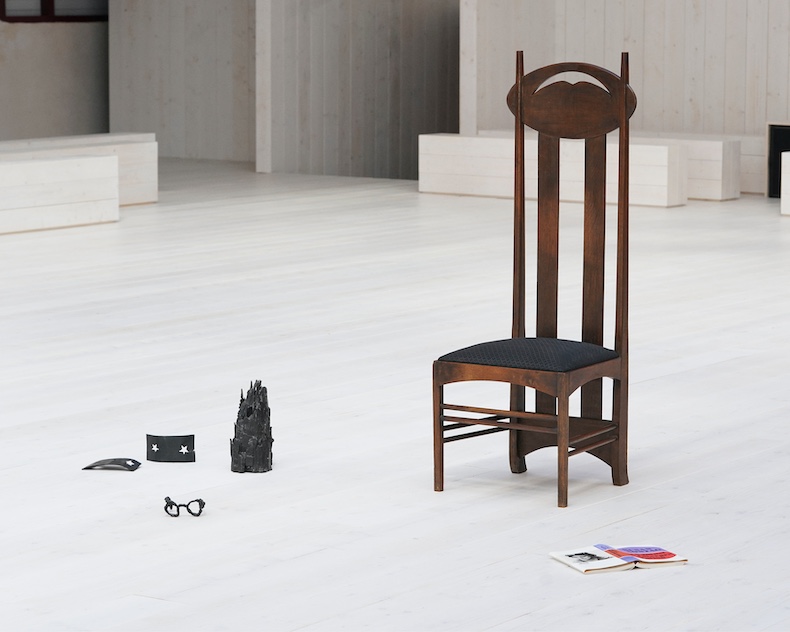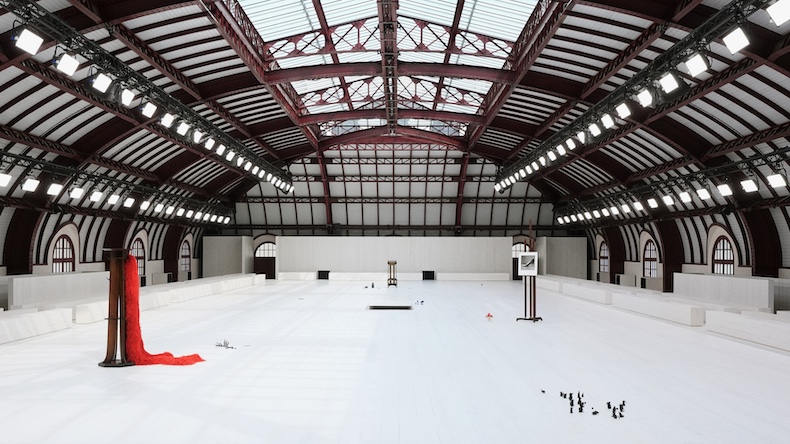The work of the photographer Peter Hujar (1934–87) is enjoying a moment in the sun. It started with ‘Peter Hujar: Portraits in Life and Death’, the collateral event at this year’s edition of the Venice Biennale put on by the photographer’s foundation. A more modish confirmation of his prominence was apparent during the Paris fashion week which took place from 18–23 June (not really a week – I know). As the audience filed into the barracks of the Garde républicaine for Loewe’s show, past the horses trotting around a pen, into the grand 19th-century stable, and headed upstairs to a platform among the rafters, there was a display of Hujar’s Shoe for Elizabeth (1981) set upon an easel designed by Carlo Scarpa (1906–78). Opposite it, a red feather boa hung on a coat rack by Charles Rennie Mackintosh (1868–1928). At the other end of the room was a more theatrical set up: Mackintosh’s ‘Argyle’ chair, with some small bronze sculptures – including a set of bronze spectacles – by Paul Thek (1933–88) on one side of it and a copy of Susan Sontag’s Against Interpretation (1966) on the other. Various mice, birds and droppings sculpted by Thek, part of his ‘Personal Effects of the Pied Piper’ series, seemed casually placed along the rest of the space. This room was the catwalk for Loewe’s menswear show; rest assured there was plenty of space for the models to walk without stubbing their toe on a Thek.
Charles Rennie Mackintosh’s Argyle chair is flanked by sculptures by Paul Thek and a copy of Against Interpretation by Susan Sontag. Courtesy Loewe

At first glance, bringing all these objects together might seem like a statement of taste rather than anything more specific. But the works reward more attention, or at least more thought. Against Interpretation is dedicated to Paul Thek. Thek and Hujar were lovers. Thek and Sontag were friends until, as with so many of his friends, they had a major falling out and never quite recovered. Hujar is perhaps now best known for the photograph that became the cover of Hanya Yanagihara’s A Little Life (2015), though his chronicling of New York subcultures and elegant, formal photographs of naked men have a cult following all of their own. He perhaps produced his best work when he photographed the Palermo catacombs on a visit to Sicily with Thek in 1963. Death, alas, looms large in Hujar’s story, as he died from AIDS at the peak of the crisis. It is hard not to read this back in to the work he produced, which mostly documented the freaks and the chic discarded by an orthodox society. But the work stands on its own.
Thek’s reputation might well be stronger in Europe than in his homeland of the United States. In 1967, at the peak of his US fame, he left the country for Europe, where his focus became ephemera. He constructed sculptures from rubbish only for them to be scrapped away upon completion. He was a dazzling painter, though the bronzes from towards the end of his career that pepper the Loewe show have a power beyond their diminutive size. They are not often exhibited and to see these small scraps of metal inflected with life is a pleasing moment of contact with one of the late 20th century’s most inventive and, now, overlooked artists.
Mice and droppings from Paul Thek’s series The Personal Effects of the Pied Piper (1975–76). Courtesy Loewe

But these works are also a challenge to the viewer. Is there a symbolism in that scrap of metal? Do the stars allude to a stars and stripes torn to shreds; is this a fashioning of a natural world or an industrialisation of it? Or can you merely appreciate the form, the shape, the technique? Perhaps we should not overread them and let them stand, instead, against interpretation. The furniture seems to confirm that this is the reading we should make: when a line is right it is enough. Let us not try to read more into it than the perfection of the line. If all of this sounds too rigid then the froth of the bright red boa suggests there is more to this attitude than severe lines – the boa itself may be an allusion to Sontag’s more famous essay Notes on Camp (1964). The world, in the hall of the Garde républicaine, can accommodate both attitudes and when the models emerge on to the catwalk, a single gold feather springing from the model’s head is the first thing that we see. Here, the idea of enjoying things on their own terms takes flight.
The barracks of the Garde républicaine, where the Loewe Spring/Summer 2025 menswear show took place. Courtesy Loewe



